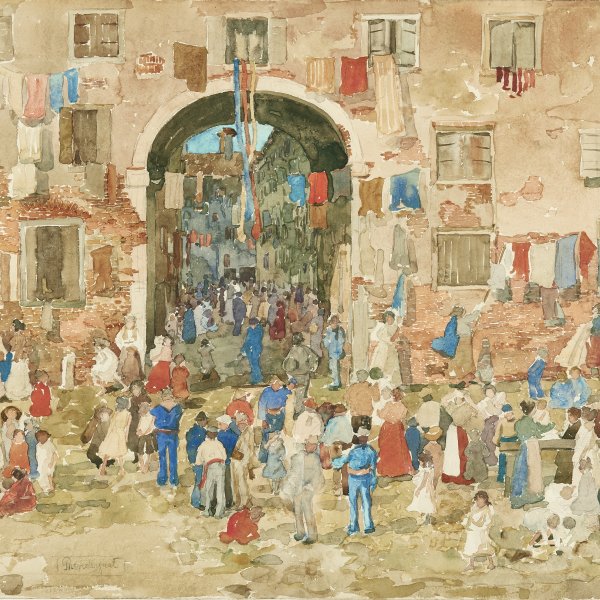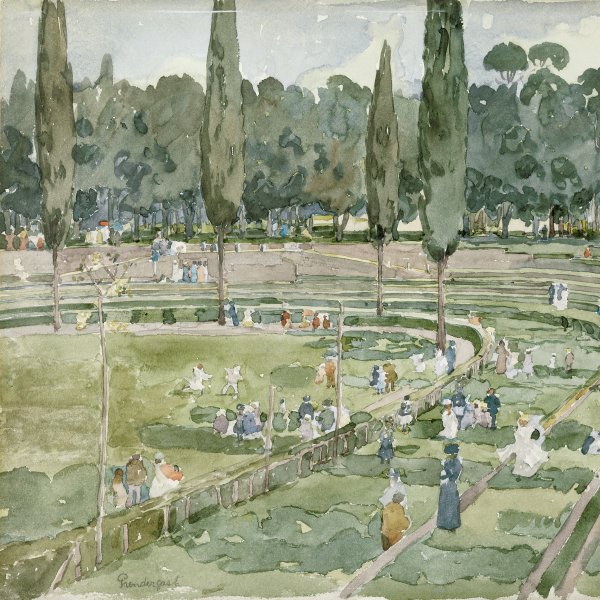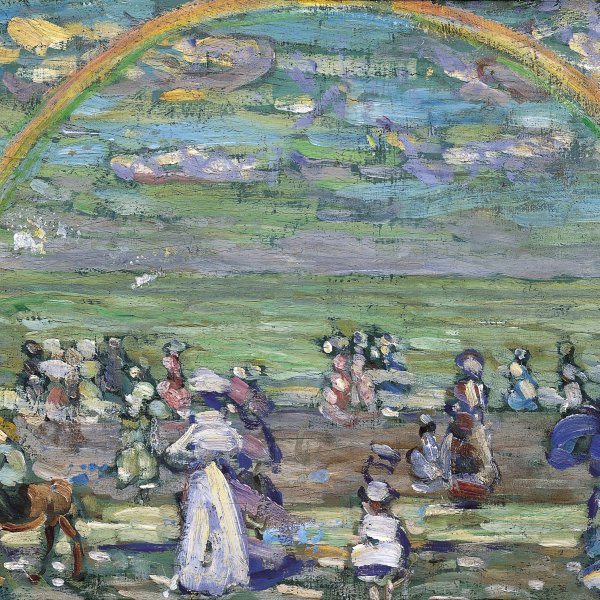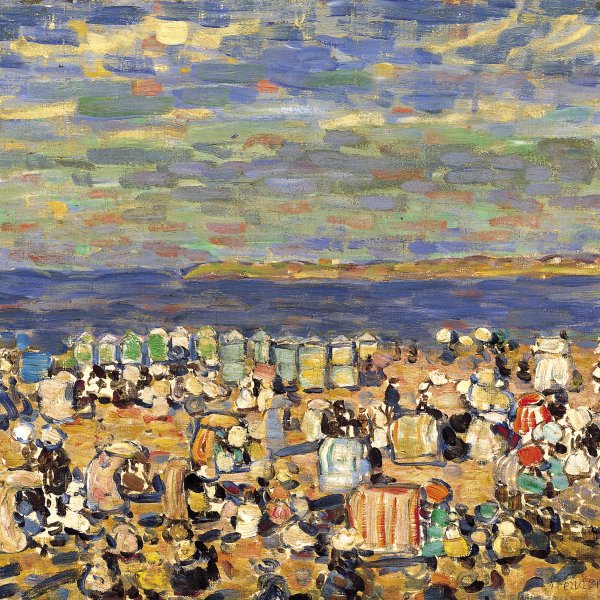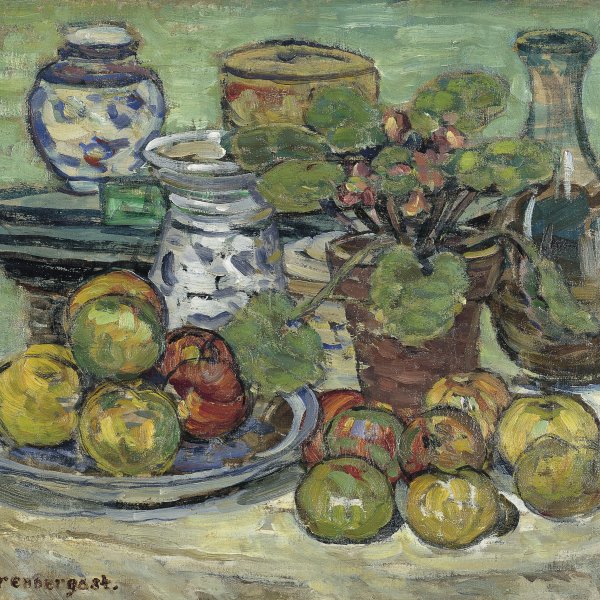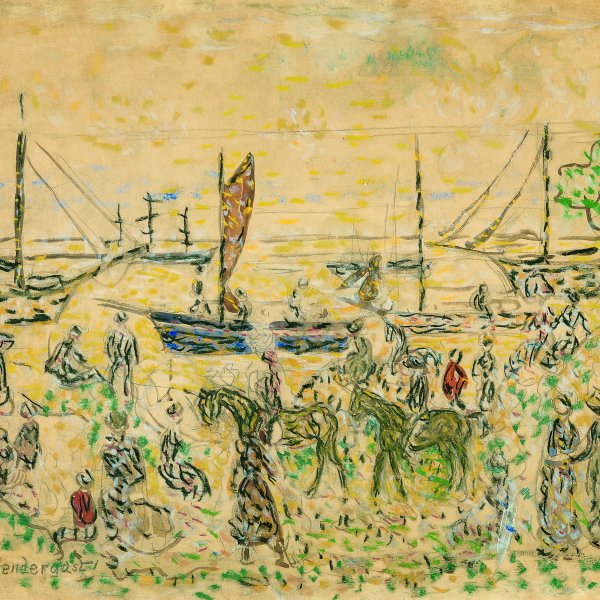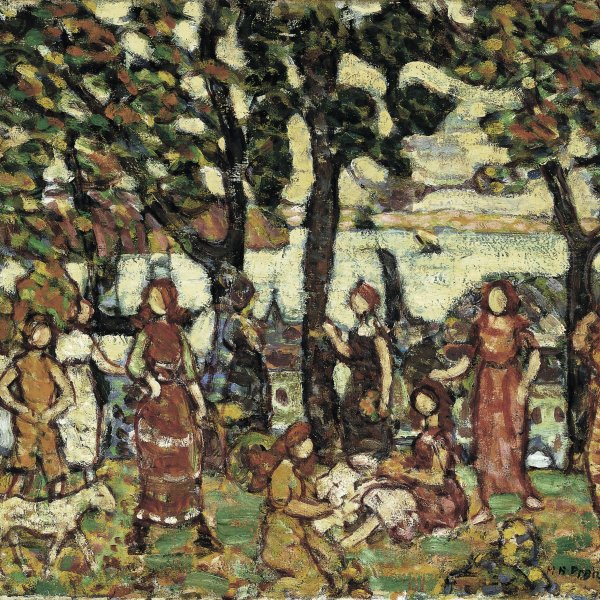Maurice Prendergast
A member of The Eight, a group that brought about a change in the straitlaced American art scene of the beginning of the twentieth century, the painter Maurice Brazil Prendergast was born in the British Colony of Newfoundland in 1858 and moved to Boston with his family as a child.
Prendergast’s art studies began in 1891 with a trip to France when he was over thirty years old. During his three-year stay in Paris he attended the Académie Colarossi and the Académie Julian. Following an initial period influenced by Édouard Manet and James Whistler, his contact with the circle of the Nabis also left a mark on his work. On returning to Boston in 1895, he worked for his brother’s newly-established picture-frame business and began to be known for his watercolours, which were shown at the Boston Art Club and the Pennsylvania Academy of the Fine Arts.
Prendergast visited Europe seven times throughout his life. A trip to Italy between 1898 and 1899 had a particular impact on his work. His admiration for fifteenth-century Italian art and architecture is expressed in a long series of works depicting life in Italian squares and streets, particularly in Venice. These works were shown in the artist’s first one-man exhibition at the Macbeth Gallery in New York in 1900.
As Prendergast’s fame increased, so did the time he spent in New York. Together with Robert Henri and another six artists he became a member of The Eight, who exhibited at the Macbeth Gallery in 1907 as a protest against the conservative policies of the National Academy of Design. This statement brought about a change of attitude in the members of the academy and inspired other independent initiatives such as the Armory Show of 1913, of which Prendergast was also a joint organiser. He died in New York in 1924.

